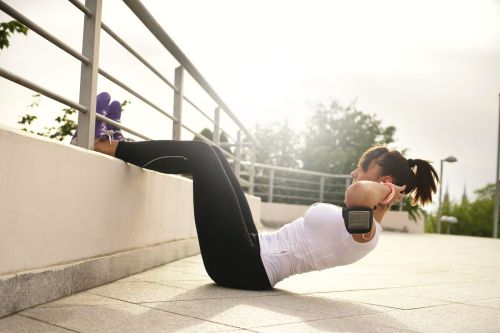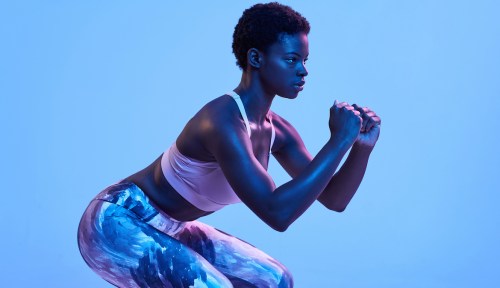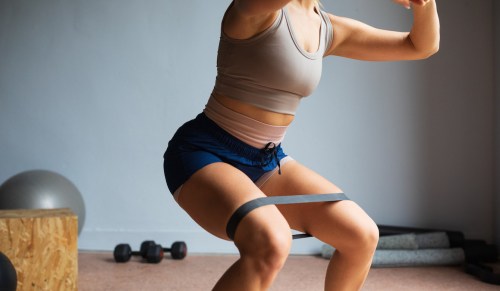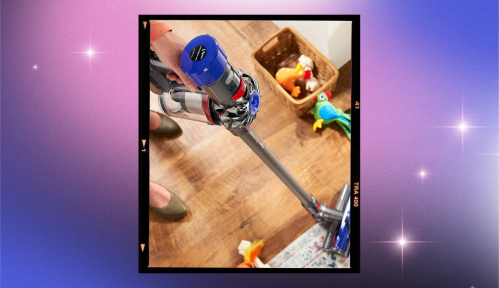A funny thing happens in fitness: Sometimes body parts other than the ones we’re trying to target sneak into our exercises, kind of like siblings vying for attention. For example, my quads try to do most of the work when I’m attempting to sculpt my glutes. It’s really all about muscle overcompensation, and it’s annoying.
Another common case of this muscle rivalry action is your hip flexors taking over during an ab workout. “I find this is all too common, especially with crunch-style exercises,” says Erica Ziel, fitness trainer and core expert. “Going too fast adds onto the hip flexor burden. I’d say more people overuse their hip flexors than not.”
Why your hip flexors, of all muscles? Well, they’re already one of the tightest parts of plenty of people’s bodies, mainly because of sitting all day. “Starting your core workouts with already tight hip flexors can make it even more challenging to keep them quiet during those exercises,” says Ziel. “When your hip flexors are already tight, and you do lots of core exercises that have you feeling your hip flexors even more, you’re just causing them to become even tighter.”
The problem with this compensation is that it can lead to things like poor posture, neck and lower back pain, poor core function, and possibly even be the source of other pain in your body. “People are not being taught how to correctly connect with their core. When doing abdominal exercises without understanding how to actually activate the deeper layers of the core, the hip flexors tend to take over,” says Ziel. Want to ensure your abs remain the star of their own show? Keep these four things in mind:
- 1.Decrease your range of motion: “Move through a range where you actually feel your abdominals and deep layers of your core working without your hip flexors taking over,” says Ziel, noting that you might have to modify your ab work by keeping your feet on the ground, or by doing full-body core exercises (like these standing ab moves).
- 2.Connect with your pelvic floor: Ziel points out that you should be able to connect lightly with your pelvic floor during abdominal exercises. “For many who do a lot of strength training, I find they grip through their muscles which is preventing the deep core muscles from actually working,” she says. “A tip I always teach is to activate 50 percent of what you’re currently doing in order to help get those tight/gripping muscles to chill out and allow the deeper layers to turn on.” Also? Don’t forget to breathe, because you can use your breathwork to help engage your abs and deep core.
- 3.Loosen up your surrounding muscles: “Another big piece to turning off your hip flexors is to foam roll your quads, and use a soft ball to release your lower abdomen as the hip flexor fascial line connects through the psoas deep in the abdomen which can be contributing to that annoying low back pain,” says Ziel. “Just grab a small soft ball, and in a plank position, place the ball under your lower abs and slowly roll with the soft ball while engaging your abs.” She also recommends rolling the ball over your hips in order to open up those hip flexors, as long as you’re using your abs to help you articulate your spine rather than just your glutes.
- 4.Strength train: Your hip flexors can be helped by training other muscles near them, too. “Strengthening your glutes and hamstrings with hip rolls, bridges, squats, and deadlifts—never going too heavy—can help relax your hip flexors,” says Ziel.
Ever wonder if you can overwork your core? You’re right. And this is why muscle imbalance is a thing, plus how to balance things out.
Sign Up for Our Daily Newsletter
Get all the latest in wellness, trends, food, fitness, beauty, and more delivered right to your inbox.
Got it, you've been added to our email list.











